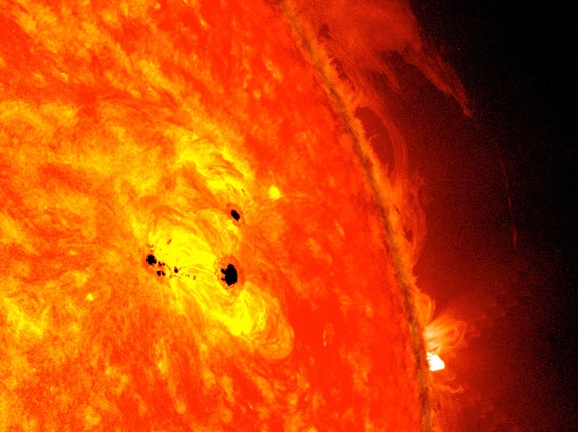This Sunspot Is Six Times The Size Of Earth
This article is more than 2 years old
Few things are as incredible and awe inspiring as a picture of the surface of the Sun. You think of the Sun as this nice, peaceful thing in the sky that makes everything all warm and fuzzy and gives you a tan. Then you lay eyes on the roiling, churning exterior, and your entire perspective changes. This stunning image of a massive new sunspot is a case in point. Check it out below, and then spend the remainder of your week feeling small and puny.

Over the course of two days—February 19th and 20th—scientists at NASA’s Goddard Space Flight Center watched a sunspot as it grew, and grew, and grew some more. It didn’t stop until the black blemish on the face of the Sun was more than six times the diameter of our own measly little planet.
Sunspots are areas of reduced surface temperature on the Sun, caused by strong bouts of magnetic action that make the areas appear darker than the surrounding regions.
Here’s what NASA has to say about the phenomenon:
The spot quickly evolved into what’s called a delta region, in which the lighter areas around the sunspot, the penumbra, exhibit magnetic fields that point in the opposite direction of those fields in the center, dark area. This is a fairly unstable configuration that scientists know can lead to eruptions of radiation on the sun called solar flares.
Solar flares have been known to kick off geomagnetic storms, which have in turn taken down power grids for extended periods of time, and interrupted radio communication.












